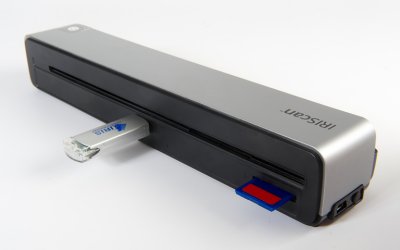These days I’m heavily looking into the NoSQL space, and I’ve currently limited my learning to the document space of CouchDB, MongoDB, key/value space of AWS SimpleDB and Cassandra, and the Neo4J graph space. For the projects I’m involved in I’m most excited about Couch & Mongo, even though I’d love to host it in the AWS space and therefore should be looking at SimpleDB.
If you’re exploring this space as well, I’d love to hear from you and your thoughts. Many more posts are bound to come ![]()
Today was the time for my yearly developer certificate renewal. After invalidating my old certificate and making a new one, removing all old profiles, I got the error above. It took me a little while to figure it out, but while I had generated my Ad Hoc distribution profile, I hadn’t actually installed it, so I had my certificate set up for distribution but no mobile provision profile. Just my little d’oh moment, I hope it helps you figure out yours ![]()
It’s been two years since I first wrote on using SQLite for iPhone SDK. Since then, iOS has come a long way, especially when it comes to storing data. But still, much remains the same. For instance, FMDB is still a great way of accessing SQLite databases directly, and if you’re most familiar with SQL and don’t want to learn too much new stuff (learning Objective-C and Cocoa can be enough by itself), this is a great way to write your first apps.
But, with iOS 3.0 came Core Data, and I was so happy when it did. Marcus Zarra wrote a great book with PragProg that I wholeheartedly recommend: it’s easy to read and thorough at the same time. I followed his workshop at NSConf ‘09, which was great, and I understand people have enjoyed the videos he and Scotty produced over at iDeveloper TV. I use Core Data in all my projects now, and its backed by SQLite, so I get a great mapping while having the performance of the database.
It being the year of the NoQL-databases, though, a post wouldn’t be complete without saying you can now ditch SQLite all together and use CouchDB. CouchBase have made a developer preview of CouchDB for iOS that I’m looking forward to try out. CouchDB has great replication, but I still need to learn more about how to handle security and access to data so to not give all my application users the keys to the “castle”.
Happy coding ![]()
I’ve been looking for a great-looking and great-sounding speaker system for my Mac. And just so we’re clear: great-sounding is for classical music, and I expect equal or better than my Celestion/NAD system I bought for ~10.000 NOK when I was 15. My problem has been that either the speakers filled too much in my office space (3.5 m2), and/or they looked really bad.
My brother-in-law recommended BOSE, and specifically the Companion system. I didn’t find anywhere to hear them, but I took a gut decision and ordered one. They simulate a 5.1 system, and in that they actually do a quite good job. The tweet/high frequencies isn’t all that great, but if you’re playing computer games, watch movies or listen to something else than classical and jazz, I’m sure out of the box you’ll have no problem with it.
What’s funny is that I’ve grown used to them, and having set the equalizer in iTunes to boost the high frequencies a bit, they actually do a fine job. For sure, I still prefer my HiFi system, but it comes pretty close at a third of both the space and price. I still believe there’s room for great-looking speakers that are worthy of a low-end HiFi system (meaning the equivalent of a relatively cheap Denon receiver with some not too expensive stereo speakers) that can outperform the BOSE, but until they come around this is a quite nice setup. They don’t fill much and listening to Fontana’s Sonata Secunda with one of my favourite recorder players is pleasant. Not like a HiFi system where it feels like the performers are in the room, but still really nice. And for those occational games, the 5.1 emulation works great.
 A while back I bought an IRIScan 2, a little scanner that could be laying in the kitchen drawer to scan incoming bills. It’s not a very fast scanner, it doesn’t have battery for very many pages, but for incoming mail, perhaps some music scores and such, it’s quite good.
A while back I bought an IRIScan 2, a little scanner that could be laying in the kitchen drawer to scan incoming bills. It’s not a very fast scanner, it doesn’t have battery for very many pages, but for incoming mail, perhaps some music scores and such, it’s quite good.
It scans to color JPEG which makes the files a bit large and gives many shades of white and black, and light bleed from the surroundings is actually a bit of a problem, especially in paper folds. But this is all forgiven with its ease of use: turn it on, insert paper, and it’s saved to either the internal storage, an SD card (my preference) or a USB key. The reason I prefer the SD card is simply I had it laying around, and it’s easy to take out and insert into a card reader.
The reason I use a card reader is simply that the device doesn’t transfer the images quickly off it. But if you’re not in a hurry, that’s even easier. When connected to your computer, it will only charge or transfer files, there’s no way to hook it up to a scanner program, and if you start scanning, it will eject the storage area first. This was a surprise to me, but no problem. The only problem I have with it isn’t even with the device, but with my iPad. For the iPad to recognize the images on the SD-card through the photo connector, you first need to rename the scanning folder to DCIM. It would be nice if either the iPad would look through more folders on the SD-card, or if IRIScan had a possibility of calling the folder DCIM. Then it would REALLY be portable scanning ![]()
All in all, I’m very happy with the device. I use it for incoming mail, and it’s quickly done. Please find attached a letter scanned that has not been processed in any way. 
Follow Me
Follow me online and join a conversation